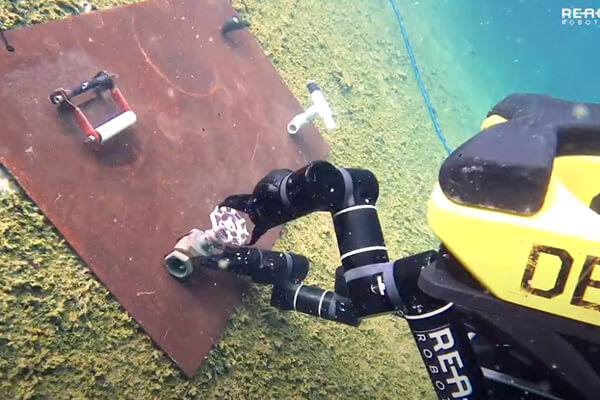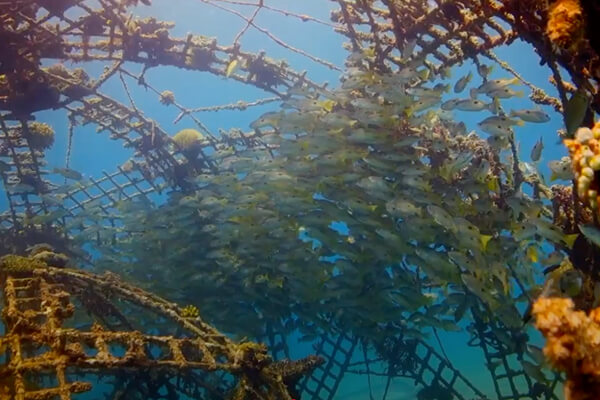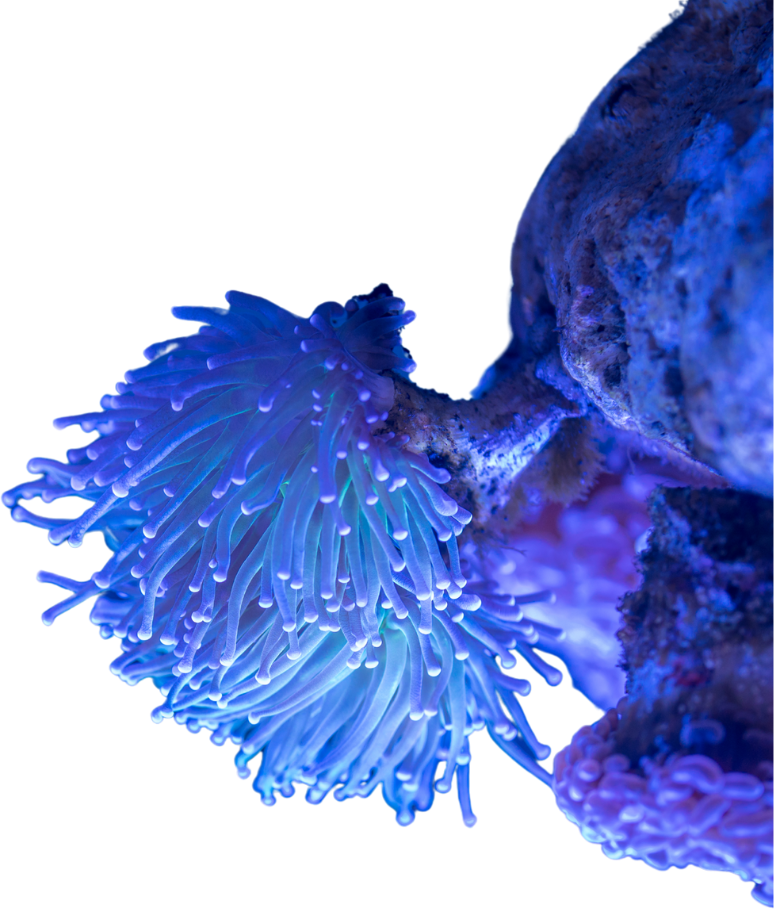Cleaner Wrasse – The Reef’s Spa Service
- Cleaner wrasses remove parasites from larger fish.
- Their cleaning stations reduce fish stress and improve health.

SeaVox integrates best-in-class technologies to deliver a complete marine restoration platform:
AI DRIVEN
MONITORING


This video demonstrates the visual potential of coral reef imaging using Gaussian Splatting technology - developed by Wildflow, a pioneer in immersive 3D environments.
AI DRIVEN
MONITORING
Our AI algorithms analyse satellite and underwater imagery to assess reef health in real-time.
3D imaging and machine learning enable precise site selection based on sunlight exposure, nutrient flows, and biodiversity potential.
AUTONOMOUS
DRONES
Our AI algorithms analyzes imagery to monitor reef health in real time and identify optimal restoration sites. This data not only informs our operations but also enables the creation of comprehensive environmental health reports - and in the future, will support robust environmental impact assessments.
Our autonomous drones offer hybrid solutions that allow us to manage restoration projects in remote locations by guiding local teams with real-time data and expert support. In the second phase of our development, fully autonomous restoration drones will be equipped with robotic arm manipulators.
AUTONOMOUS DRONES


We work closely with Reach Robotics to adapt their advanced robotic arm technology for scalable and automated coral reef restoration. Our engineering team is developing specialised end-effectors capable of propagating a diverse range of coral species, with the goal of restoring reefs that support more than 70 species.
At every stage, we aim to mimic natural reef formations and re-establish the complex symbiotic relationships that define healthy marine ecosystems - fostering resilience, biodiversity, and long-term ecological recovery.
MINERAL ACRETION


Pemuteran, a coastal village in North Bali, is home to one of the world’s most successful community-led coral restoration initiatives. Since its inception in 2000, the Biorock project has transformed degraded reefs into vibrant marine ecosystems, serving as a global model for sustainable reef rehabilitation.
MINERAL ACRETION (ELECTROLYSIS)
TECHNOLOGY
Mineral Acretion is an innovative method that uses low-voltage electrical currents to stimulate mineral accretion-specifically, the deposition of calcium carbonate - on submerged metal structures. This creates an ideal surface for coral larvae to attach and grow, significantly accelerating reef development while increasing resilience to bleaching and other stressors.
BLOCKCHAIN
BACKED FUNDING
This foundation also enables the future issuance of biodiversity and blue carbon credits - and supports the development of Coral Coin, our regenerative funding model designed to sustain and scale reef restoration efforts globally.
SeaVox licenses its proprietary AI and monitoring solutions to governments, NGOs, and corporations, supporting large-scale marine restoration projects globally.SeaVox licenses its proprietary AI and monitoring solutions to governments, NGOs, and corporations, supporting large-scale marine restoration projects globally.
Through innovation and automation, SeaVox is making restoration scalable, verifiable, and financially self-supporting.



SeaVox is a fully integrated system that combines cutting-edge technology in marine robotics, AI, environmental sensing, regenerative substrates, and blockchain verification.
Designed to function in two clear phases, the system begins by understanding and mapping reef ecosystems, then scales restoration through autonomous deployment.
Roadmap: Phase 1: Mapping and Laying the Foundation Duration: Year 1–2 Pilot Stage
SeaVox begins by establishing a deep understanding of the reef ecosystem. This phase builds the foundation for intelligent, targeted restoration and trains the AI systems that will guide autonomous action in Phase 2.
Deployed to perform continuous, low-impact reef surveys
Operate independently on pre-programmed routes
Collect high-resolution visual and environmental data
Reduce cost and risk while covering large areas efficiently
Generates ultra-high-resolution, photorealistic reef models
Captures coral morphology and habitat structure in unprecedented detail
Provides critical spatial data for restoration planning and site selection
Mounted on drones and seabed stations to establish a comprehensive ecological baseline:
Temperature
PH
Turbidity
Dissolved Oxygen
Light Intensity
Current flow (ADCP/DVL)


Outcome of Phase 1: A detailed environmental baseline, trained AI systems, secure data infrastructure, and a foundation for autonomous restoration — all recorded with verifiable integrity.
Cleaner wrasses remove parasites from larger fish.
Their cleaning stations reduce fish stress and improve health.

Phase 2: Autonomous Restoration and Scaling Duration: : Year 2–5 Operational Scaling
Phase 2 activates full autonomy. SeaVox drones begin regenerating reefs with minimal human input, guided by AI, real-time feedback, and verifiable blockchain infrastructure.
Drones are equipped with robotic arm manipulators for precise interaction
Perform autonomous coral microfragmentation — cutting into high-survival-rate fragments
Attach coral fragments to Biorock structures using real-time visual recognition & placement algorithms
Sensor data feeds directly into AI models to inform every action
Enables dynamic behaviour: pause planting, change locations, or alter strategies in real time
Supports continual learning and improved outcomes with each deployment
A live, continuously updating virtual model of the reef ecosystem
Integrates all environmental, biological, and spatial data collected in Phase 1 and 2
Enables predictive modelling, scenario analysis, and restoration planning
Outcome of Phase 2: A fully autonomous, AI-driven reef restoration system — capable of planning, executing, verifying, and scaling ecosystem regeneration with integrity.


.gif)
